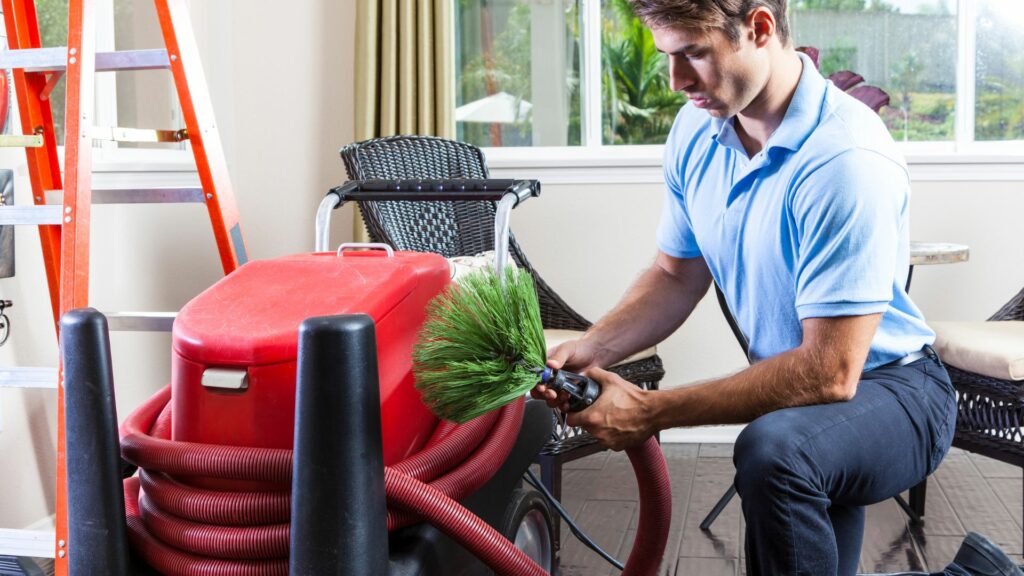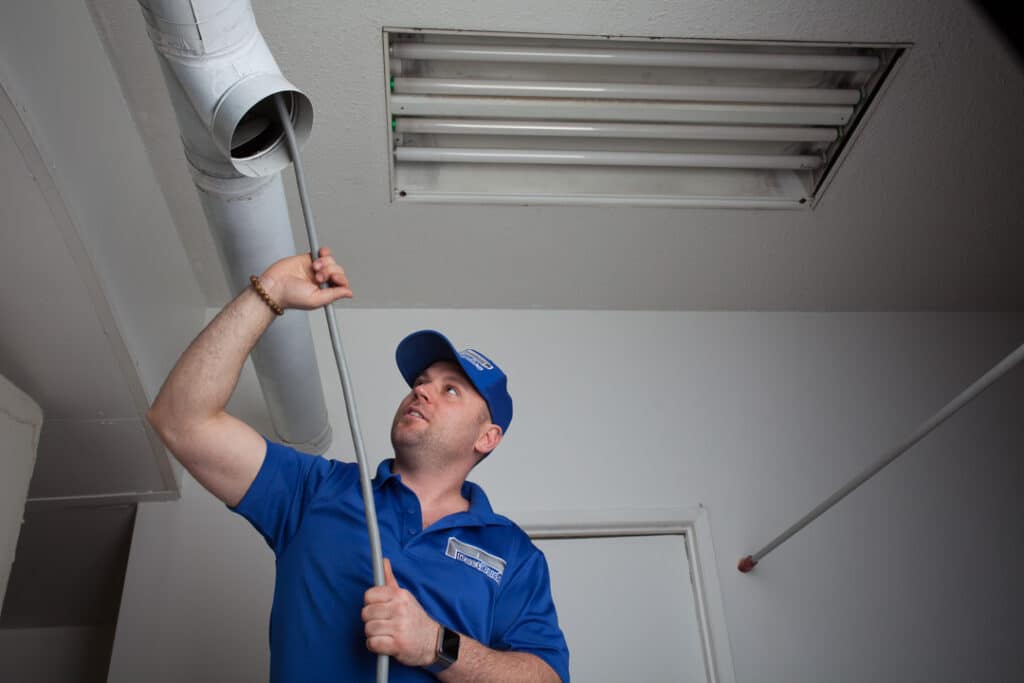When it comes to heating, ventilation, and air conditioning (HVAC) systems, homeowners and business owners often seek solutions that offer both efficiency and comfort. One type of HVAC system that stands out for its versatility and energy efficiency is the heat pump. But what sets it apart? The key component is the reversing valve.

Understanding the Basics of HVAC Systems
Before diving into which HVAC systems involve a reversing valve, it’s essential to understand what an HVAC system is and how it functions. HVAC stands for Heating, Ventilation, and Air Conditioning, and these systems are designed to regulate indoor climate and ensure air quality. Whether it’s for a residential home or a commercial building, an efficient HVAC system contributes significantly to comfort, health, and productivity.
What is a Reversing Valve?
The reversing valve is a gearbox for the HVAC system, allowing it to switch between heating and cooling modes. It’s a critical component of heat pumps, making them versatile and suitable for various climates and requirements. Essentially, the reversing valve alters the flow of refrigerant, changing the system from a heater to an air conditioner and vice versa.
How Does a Reversing Valve Work?
The reversing valve works by directing the flow of refrigerant through different paths. When the HVAC system is in heating mode, the refrigerant flows in one direction, absorbing heat from the outside air and releasing it indoors. In cooling mode, the process is reversed – the refrigerant absorbs heat from inside the building and releases it outside.
Types of HVAC Systems Featuring a Reversing Valve
Now that we know what a reversing valve is and how it functions, the next logical question is, which types of HVAC systems feature this component? The primary type of HVAC system that involves a reversing valve is the heat pump, including air-source heat pumps, ground-source heat pumps, and ductless mini-split heat pumps.
Air-Source Heat Pumps
Air-source heat pumps are popular for their efficiency and cost-effectiveness. These systems transfer heat between the inside of a building and the outside air. Thanks to the reversing valve, air-source heat pumps can provide efficient heating in the winter and effective cooling in the summer.
Ground-Source Heat Pumps
Also known as geothermal heat pumps, ground-source heat pumps leverage the stable temperatures of the ground to provide heating and cooling. These systems are known for their high efficiency and longevity. The reversing valve in a ground-source heat pump enables it to switch between extracting heat from the ground during the winter and dissipating heat into the ground during the summer.
Ductless Mini-Split Heat Pumps
Ductless mini-split heat pumps are an excellent option for buildings without existing ductwork. These systems are incredibly versatile and can be used to heat or cool individual rooms. The reversing valve in a ductless mini-split heat pump allows for quick and efficient switching between heating and cooling modes.
Benefits of HVAC Systems with Reversing Valves
HVAC systems featuring a reversing valve offer numerous benefits, making them a popular choice for homeowners and business owners alike. Here are some of the key advantages:
Energy Efficiency
One of the most significant benefits is energy efficiency. Heat pumps, with their reversing valves, can provide the same level of comfort as traditional HVAC systems but consume less energy. This leads to lower utility bills and reduced environmental impact
Year-Round Comfort
Thanks to the reversing valve, heat pumps can provide both heating and cooling, ensuring year-round comfort. This versatility eliminates the need for separate heating and cooling systems, saving space and reducing installation costs.
Environmentally Friendly
Heat pumps are generally more environmentally friendly than traditional HVAC systems. They consume less energy and use refrigerants with lower global warming potential. This makes them an excellent choice for eco-conscious homeowners and businesses.
Installation and Maintenance
Installing a heat pump with a reversing valve is a straightforward process, but it requires the expertise of a qualified HVAC technician. Proper installation ensures the system operates efficiently and effectively. Regular maintenance is also crucial to keep the system running smoothly and extend its lifespan.
Professional Installation
Professional installation is essential for the optimal performance of an HVAC system with a reversing valve. A qualified technician will ensure that the system is correctly sized for the building, properly installed, and thoroughly tested before use.
Regular Maintenance
Regular maintenance is vital to keep the system in top condition. This includes cleaning or replacing filters, checking for refrigerant leaks, inspecting the reversing valve, and ensuring all components are functioning correctly.
Cost Considerations
While the initial cost of installing an HVAC system with a reversing valve may be higher than traditional systems, the long-term savings on energy bills can offset this investment. Additionally, many regions offer incentives and rebates for installing energy-efficient systems, further reducing the overall cost.
Initial Investment
The upfront cost of a heat pump with a reversing valve can be higher than that of a traditional HVAC system. However, this investment is often justified by the long-term savings on energy bills and the system’s longevity.
Long-Term Savings
Due to their energy efficiency, heat pumps can significantly reduce utility bills over time. This makes them a cost-effective choice for both homeowners and businesses looking to minimize their operational costs.
Choosing the Right HVAC System
Selecting the right HVAC system involves considering various factors, such as the climate, building size, and budget. Heat pumps with reversing valves offer a versatile and energy-efficient solution, but it’s crucial to assess individual needs and consult with an HVAC professional to make an informed decision.
Climate Considerations
Heat pumps are most effective in moderate climates. In extreme temperatures, an auxiliary heating system may be necessary to supplement the heat pump’s output. It’s essential to consider the local climate when choosing an HVAC system.
Building Size and Layout
The size and layout of the building also play a significant role in determining the right HVAC system. Ductless mini-split heat pumps are ideal for smaller buildings or individual rooms, while air-source or ground-source heat pumps may be better suited for larger structures.
Budget
While the initial investment in a heat pump with a reversing valve may be higher, the long-term savings on energy bills and potential rebates can make it a cost-effective choice. It’s essential to balance the upfront cost with the potential savings when making a decision.
FAQ
What is the primary benefit of a reversing valve in an HVAC system?
The primary benefit of a reversing valve is its ability to switch the HVAC system between heating and cooling modes, providing year-round comfort and energy efficiency.
Are heat pumps with reversing valves suitable for all climates?
Heat pumps are most effective in moderate climates. In areas with extreme temperatures, an auxiliary heating system may be necessary to supplement the heat pump’s output.
Is professional installation necessary for HVAC systems with reversing valves?
Yes, professional installation is essential to ensure the system is correctly sized, properly installed, and thoroughly tested for o ptimal performance.
ptimal performance.
For more information on HVAC systems, including their benefits and maintenance tips, visit EPA HVAC Systems.
Conclusion
HVAC systems with reversing valves, such as heat pumps, offer a versatile, energy-efficient solution for both homeowners and businesses. Their ability to provide both heating and cooling, coupled with long-term cost savings and environmental benefits, makes them an excellent investment. Whether you’re considering an air-source, ground-source, or ductless mini-split heat pump, understanding the role of the reversing valve is crucial in making an informed decision.
For additional insights on flushing your HVAC system or guidance on sealing your HVAC system, check out our other informative articles.